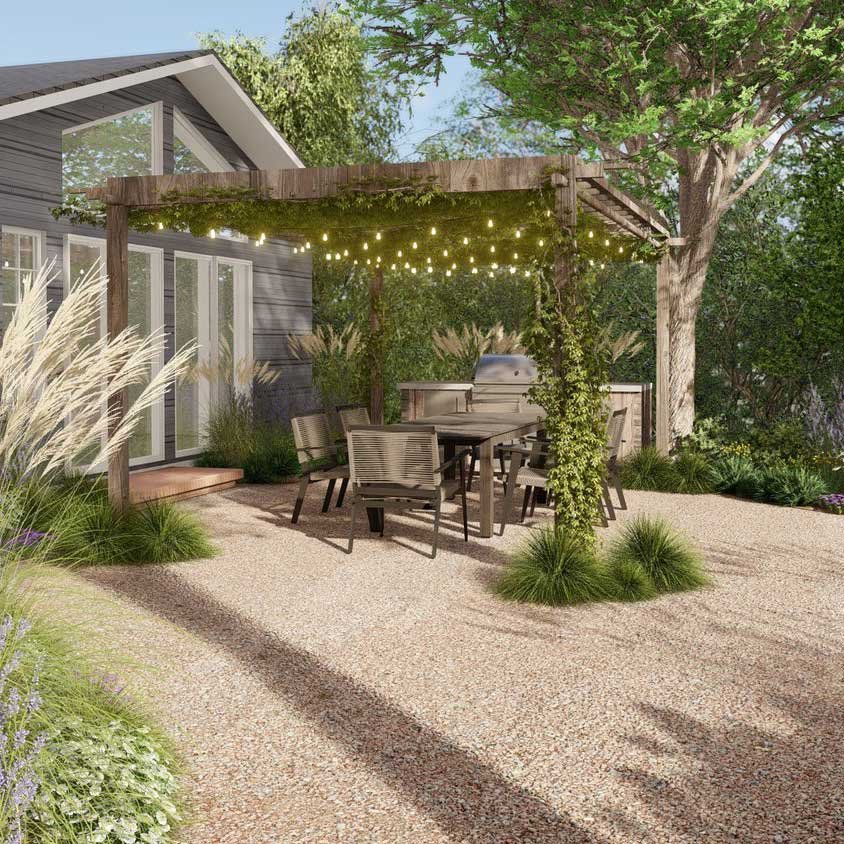7 Simple Techniques For Landscapers
7 Simple Techniques For Landscapers
Blog Article
What Does Landscapers Do?
Table of ContentsAll about LandscapersLandscapers Things To Know Before You Get ThisThe 10-Minute Rule for LandscapersThings about Landscapers4 Easy Facts About Landscapers DescribedThe Best Strategy To Use For Landscapers
- A garden attribute where water is represented by an aggregate stone product, usually a crushed rock or granite. These are most frequently discovered in modern and Japanese yard design.- A stone or natural flagstone patio, course, or sidewalk constructed without a concrete base. The base would certainly be compressed gravel and the joints would be an aggregate or walkable ground cover. - A stone retaining or cost-free standing wall developed without making use of mortar. A highly knowledgeable mason is required for a completely dry stack stone wall surface. The majority of wall surfaces in Portland are moist stacked, also if they appear to be. - An underground structure that collect water and permits it to slow percolate into the dirt around it.
Landscape style that is compatible with a websites' environment in both appearance and sustainability without negative impacts to the atmosphere. Edging in the landscape is a line of separation that develops aesthetic interest in the garden by dividing one segment from one more section.
Locations can also have a sensation of "unit" provided by trees, various other plantings, fencings, or displays. The landscape near the access to a building.
The 6-Minute Rule for Landscapers

The element in a landscape style or area in a landscape that is indicated to be most famous. The focal factor can be a plant, boulder, statuary, gathering room, or other landscape function.

The Basic Principles Of Landscapers
Reduced plants that are enabled or encouraged to spread over an area. Can refer to any "hard" yard aspects including statuary or boulders however a lot of frequently is used to refer to paths, outdoor patios, and walls - Landscapers.: Height difference between the degree of water in a fish pond (or the level of the pump if it rests outside the fish pond) and the top outlet of water which influences performance of the water pump in gph (gallons per hour).
A chemical made use of to regulate weeds. Fencing boards that run flat, typically utilized in modern-day or Japanese-inspired landscape styles. Lines that specify rooms within a landscape concept. These frequently extend from corners or vital functions of an existing structure. Appropriate use of fictional lines can assist the landscape really feel linked to the home and various other aspects.
Traditional Learn More PNW landscapes are informal. A plant that spreads more than wanted, or into habitats where it does damage.
Landscapers Fundamentals Explained
Smart irrigation controller evaluations and referrals below. 2-D making of the recommended irrigation system. Can include head positionings and insurance coverage, pipe find this sizing, GPM specs, and products needed to mount this system. An irrigation strategy is typically unnecessary for properties but is common for commercial jobs. Licensed professional that designs landscapes, schooled in design and style as well as in gardening.
The expert who intends and creates landscape projects, usually at a residential or tiny industrial level with the significant design impetus on plantings. Landscape developers usually have less education than Landscape Architects and are not licensed. A completed landscape layout, describing all components for the new landscape. This normally takes the form of a drawing theoretically.
Making use of several plantings of the same variety to fill in an area in the landscape. This can decrease upkeep and water usage in the garden.
A layer of garden compost or bark dirt applied at the base of a plant. A plant that was existing in a geographic area before individuals began altering the landscape.
The Greatest Guide To Landscapers
Just how the yard or a garden element is set up in relationship to an existing or new feature or to an instructions. Turfs that are not trimmed but grown in landscapes as perennials.

Plants that give seasonal passion and after that die back in the wintertime. Cold period lawn that is the most usual lawn grass in Portland, OR and the rest of the PNW.An open roofed structure over a patio or other landscape feature.
Lava accumulated ranging in dimension from 1/4" to dust. One of the most you can try this out common landscape crushed rock in the PNW. Area of the landscape made to handle rain water until it can saturate into the ground. A chain that manages water as it takes a trip from a roofing seamless gutter to the ground. Garden structure that develops a growing area that is consisted of and greater than the bordering quality.
Structure made from timber, concrete, paving rocks, bricks or various other materials for supporting inclines and preventing too much erosion. Narrow gutter. Developing a garden attribute being composed mainly of rocks with growings that match and can thrive in the rough environment. Lawn sprinkler head design that revolves a stream of water throughout a location.
Unknown Facts About Landscapers

Report this page